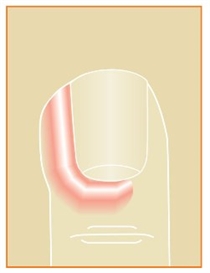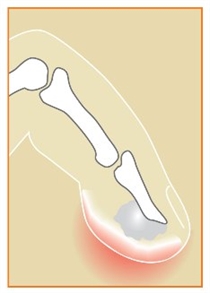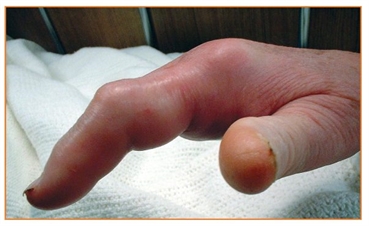Home | Education | Hand Conditions | Hand Infections



The information on this webpage is based on material from the American Society for Surgery of the Hand and is for educational purposes only.
Hand Infections
Urgency of treatment of hand infections
Hand infections can cause severe problems that persist even after the infection has resolved, such as stiffness, loss of strength, and even loss of tissues such as skin, nerve and even bone. Thus early and aggressive treatment of hand infections is essential. When seen early, some types of infection can be treated with antibiotics and local rest and soaking. However many infections begin to cause severe problems, even after a day or two, if not treated with antibiotics, surgical drainage, and removal of infected tissues. Any drainage or pus should be sent for laboratory testing to determine the type of bacteria causing the infection and the appropriate antibiotic for treatment.
Paronychia
A paronychia is an infection of the cuticle area around the fingernail. Acute paronychia is caused by bacteria, and presents with redness, swelling, pain, and later with pus. Early cases may be treated with soaks and antibiotics, but if pus is seen or suspected, drainage by lifting the cuticle and/or nail, or lancing the area, is required also. Chronic paronychia is usually caused by fungus, and the cuticle area becomes just mildly red and swollen, with scant or no drainage and mild tenderness. It occurs in people whose hands are frequently wet, such as bartenders. It may be treated with special medication and reduction or elimination of the constant exposure to moisture, which promotes this fungal infection. On occasion, surgery is needed to remove infected tissue. It is commonly mistaken for a bacterial infection. Prolonged treatment is common with chronic paronychia.
Felon
A more serious and usually more painful, throbbing infection, called "felon", occurs in the closed space of the fatty tissues of the finger tip and pulp (see image at left). This usually requires surgical drainage and antibiotics. If not treated early, destruction of the soft tissues and even bone can occur.Herpetic Whitlow
Herpetic whitlow is a viral infection of the hand, usually on the fingers, caused by a herpes virus. This is more commonly seen in healthcare workers whose hands are exposed to the saliva of patients carrying herpes. The condition, characterized by small, swollen, painful blood tinged blisters, and sometimes numbness, is typically treated conservatively and typically resolves in several weeks without many after-effects.Septic arthritis/osteomyelitis
A wound in or near a joint, or a draining cyst from an arthritic joint can cause a severe infection of the joint, septic arthritis. In just a couple of days, the joint can be destroyed by the bacteria eroding the cartilage surface of the joint. Surgical drainage is required, in addition to antibiotics. If this treatment is delayed, infection of the bone can occur, a complication that is called osteomyelitis. It typically requires one or more operations to remove infected tissue and many patients require weeks of intravenous antibiotics.Deep space infections
There are spaces in between the different layers of structures in the hand which can become infected, even from a small puncture wound. These may affect the thumb area (thenar space), the palm (deep palmar space) or even the web area between the bases of fingers (collar-button or web space abscess). These require surgical drainage, and they have potential to spread to other areas, even to the wrist and forearm.